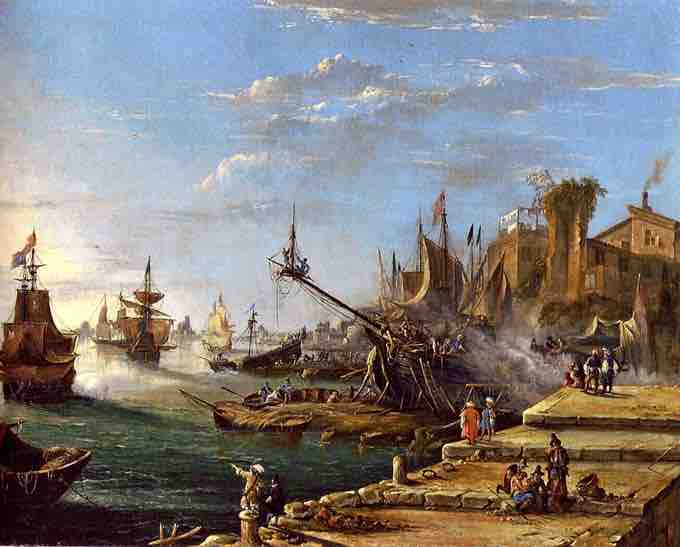Painting and sculpture can be divided into the categories of figurative (or representational) and abstract (or non-representational). Figurative art describes artwork – particularly paintings and sculptures – which are clearly derived from real object sources, and therefore are, by definition, representational. Since the arrival of abstract art in the early twentieth century, the term "figurative" has been used to refer to any form of modern art that retains strong references to the real world.

Johann Anton Eismann, Ein Meerhafen, 1600s
This figurative work from the 17th century depicts easily recognizable objects—ships, people, and buildings.
Artistic independence was advanced during the nineteenth century, resulting in the emergence of abstract art. Three movements which contributed heavily to the development of these styles were Romanticism, Impressionism, and Expressionism.
Abstraction indicates a departure from reality in its depiction of imagery. Abstraction exists along a continuum; it can formally refer to compositions that are derived (or abstracted) from figurative or other natural sources, or it can refer to non-representational art and non-objective art that has no derivation from figures or objects.
Even art that aims for verisimilitude of the highest degree can be said to be abstract, at least theoretically, since perfect representation is likely to be exceedingly elusive. Artwork which takes liberties, altering, for instance, color and form in ways that are conspicuous, can be said to be partially abstract.

Robert Delaunay, Le Premier Disque, 1912–1913
Delaunay's work is an example of early abstract art.
Non-representational art refers to total abstraction, bearing no trace of any reference to anything recognizable. In geometric abstraction, for instance, one is unlikely to find references to naturalistic entities. Figurative art and total abstraction are nearly mutually exclusive, but figurative or representational art often contains at least one element of abstraction.